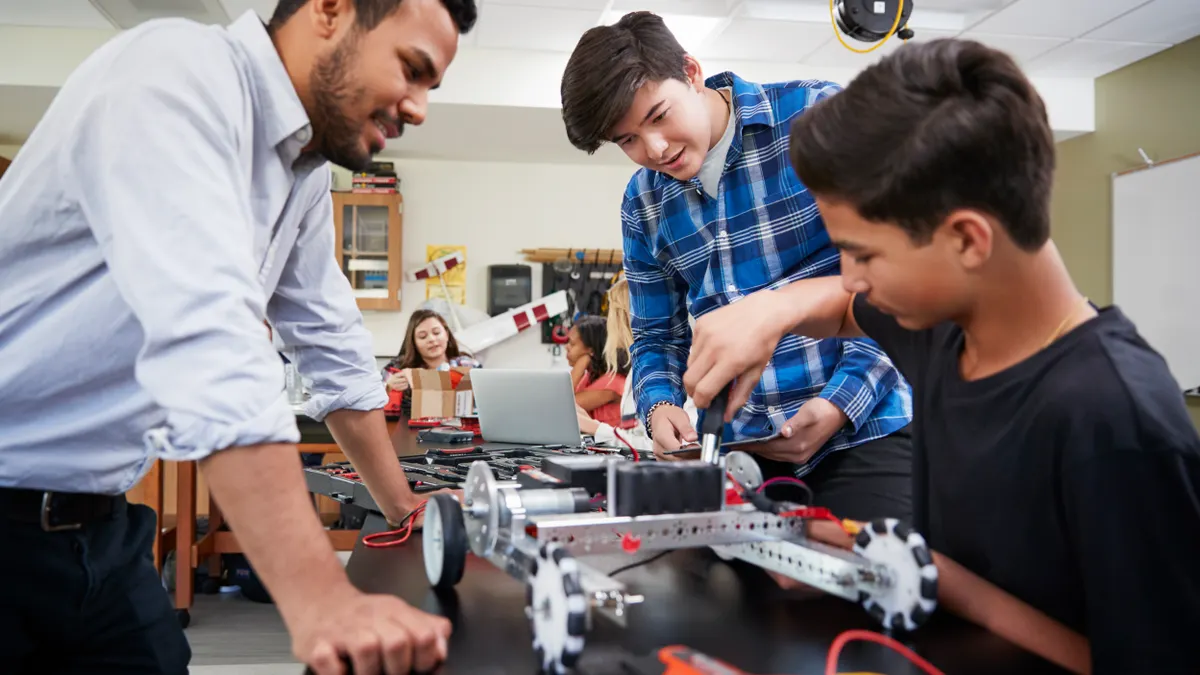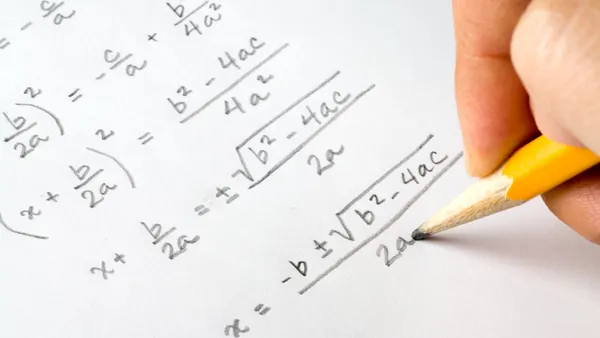To Laura Tavares, the classroom is the perfect place to learn how to argue. As squabbles unfold on social media and people spend more time in what Tavares calls “filter bubbles” of similar thinking — particularly in today’s politically polarized environment — school is where children can learn how to sit around a table, hear different viewpoints and have “better arguments,” she said.
“How do we teach young people how to argue as democratic citizens,” Tavares, the program director for organizational learning and thought leadership at Facing History and Ourselves, told Education Dive. “If they’re not taught in school where will they learn it?”
Even the youngest of elementary school students are likely aware of the U.S. presidential election coming up in 2020 — and most probably have an opinion or two. But educators can help guide students on how to share their thoughts about politics or any topic where disagreements are likely to appear.
In teaching them how to navigate their opinions and those of their peers, teachers can help students develop crucial skills they can take with them throughout life, whether that’s fighting for more crosswalks on their street or taking a bill they’ve written to Capitol Hill.
It starts with self-reflection
Teachers may feel hesitant about introducing political topics into a classroom, even though this is a time when it’s needed, said Tavares.
To her, preparation is everything. It includes teachers taking the time to look deeply at any feelings or potential bias they may have themselves about a particular topic or subject. That first step should be done long before educators step in front of students and begin to guide them into a productive conversation.
“Take the time to reflect yourself,” she said. “You’re not there just as a neutral person, but you have your own thoughts and feelings. Setting the stage with yourself, where you are and what your goals are is one more thing. But I think it really pays dividends.”
Susan Friedman agreed that teachers need to look within themselves as a first step, and also acknowledged that everyone has some bias within. Acknowledging that fact is crucial, she said, in order to help students learn how to interact with each other as well.
“The important thing is to develop your own awareness,” said Friedman, the senior director of publishing and professional learning for the National Association for the Education of Young Children. She points to one of the organization’s own books, "Anti-Bias Education for Young Children and Ourselves," recently updated for 2020, as a good resource.
Take away the script
Careful planning, however, doesn’t mean bringing a script into the classroom, said Friedman. Conversations that are too directed make it difficult for children to then have the opportunity to work anything out on their own.
Organized lesson plans and classrooms may be considered well-managed, but they may also hinder students from learning from each other “in genuine ways,” she said. Instead, she encourages educators to look for opportunities during the school day to open these kinds of discussions.
For example, when students find a worm on the playground during recess, it can be turned into a conversation on whether it should be kept in a jar to study or released back outside. They can research the best environments for a worm and be given the opportunity to present their thoughts, findings and concerns.
“Some children may want to keep the bug, but others may say we don’t have the right food to feed it,” she said. “The teacher can engage so [students] can have a real debate.”
Collaboration, not competition
Part of a productive debate, however, means thoughtfully listening to another person as they speak, said Jelani Jabari, a former middle school science teacher and president of Pedagogical Solutions. Jabari believes that, too often, people compose in their head what they want to say next instead of hearing what the other person is expressing.
Students who learn how to pause and hear another person’s opinion and thoughts can use that skill not only in the classroom, but later in life as well.
But building this skill doesn’t happen after one or two lessons. Instead, it’s developed through classrooms offering students time to reflect on their responses rather than just looking for right answers. That also means shifting the emphasis on competition to one of collaboration, he said.
Teachers can start by introducing wait times, a few seconds for students to pause before responding to a question. That small shift may also help to lower anxiety among students who may typically not contribute as much to classroom conversations and are concerned about expressing themselves.
“When you build [pausing] into a classroom, it can help lower some of the anxiety in some students,” he said. “It can help to make them feel comfortable that none of us is the all-knowing sage.”
Teachers can also provide students with specific phrasing to begin using, Laura Kelly, assistant professor of elementary literacy at Rhodes College in Memphis, Tennessee, said.
"They can teach phrases like 'Building on my classmate’s comment, I think that…' or 'I respectfully disagree because …,'" she said. "Teachers might introduce one skill at a time, give students time to practice it, and then provide feedback before moving on to a new skill."
Disagreement is part of a learning process, as expected in a classroom conversation between two students on a playground, as between two politicians on Capitol Hill. But teaching students how to productively participate in a dialogue can start right in the classroom, where students can be guided and supported as they learn this skill.
“We live in an extremely diverse country and always have,” said Tavares. “The work of citizenship, whether it’s me going to City Hall about an issue on my street, or facing major issues about climate change or health care, can only happen on a local and global level if we can constructively community with those who we don’t agree.”



















